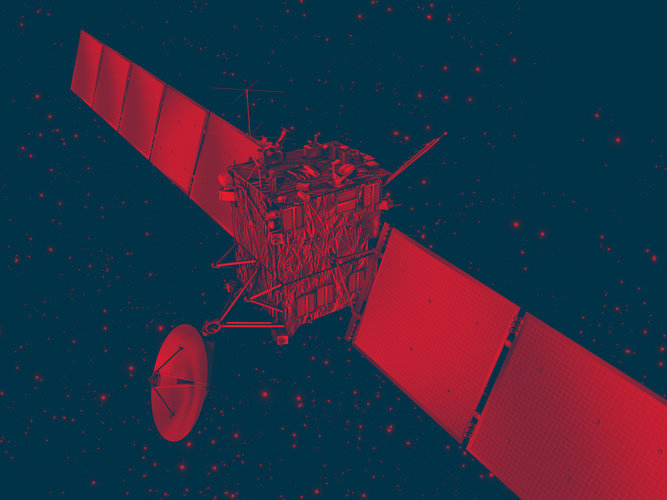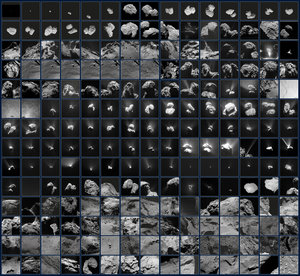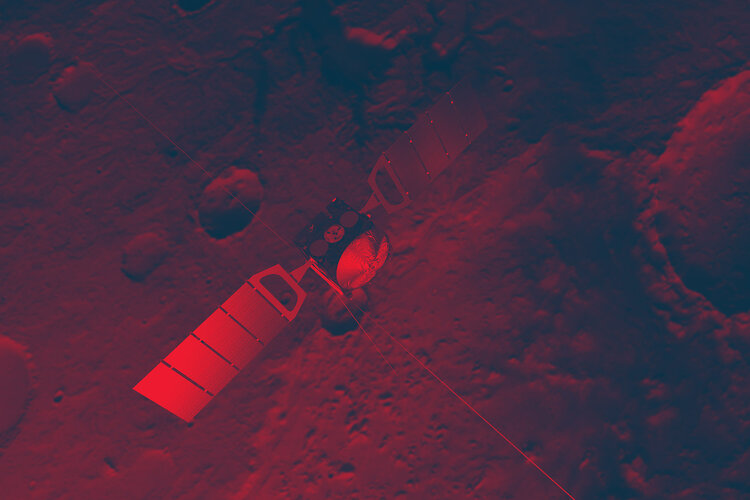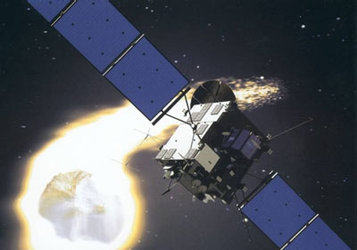Timeline: Mars swingby at 36 000 km/hr
The timeline for Rosetta's speedy swingby of Mars on 25 February includes a series of slew manoeuvres, an occultation and signal blackout, an eclipse and some excellent opportunities for scientific observations.
Rosetta's Mars swingby kicks off today with a series of complex slew manoeuvres to enable instrument calibration. The spacecraft has been correctly lined up on the proper trajectory since a series of engine firings in the past several weeks.
Rosetta is expected to pass the Red Planet at 250 km altitude and 36 191 km/hr with respect to Mars at closest approach. The swingby should reduce Rosetta's velocity with respect to the Sun by 7887 km/hr, and the spacecraft should depart Mars travelling at 78 779 km/hr relative to the Sun.
Timeline of major activities
Note: Times shown are ground event times in Central European Time, equivalent to UTC (Coordinated Universal Time) + 1 hour. Spacecraft event time is 17 mins 33 secs earlier.
23 February
| 17:32 | First of a series of slew manoeuvres to perform instrument calibrations |
| 19:30 | Flight Control Team in ESOC's Main Control Room (MCR) around the clock |
24 February

| ~14:00 | Webcam in MCR switched on (access via link at right) |
| 18:35 | Additional slew manoeuvres to perform Mars observations with onboard instruments |
| 22:30 | End of observations until after Mars swingby |
25 February
| 02:15 | -- All payload instruments switched off; CIVA camera (onboard lander) remains in operation and scheduled to take images
-- Loss of telemetry; S-band carrier signal remains
|
| 03:13 | -- Occultation starts; Rosetta behind Mars
-- Loss of S-band signal; no communication with spacecraft
|
| 03:15 | -- Closest approach to Mars (250 km)
-- Start of eclipse; no visibility for camera; no sunlight on solar panels
|
| 03:28 | -- End of occultation; S-band carrier signal back
-- Receipt of S-band carrier signal provides initial technical confirmation of swingby success
|
| 03:40 | End of eclipse; sunrise above Mars |
| 03:50 | Start of Phobos and Mars tracking with additional scientific observations |
| 03:52 | -- Acquisition of telemetry (radio signal & data); full technical confirmation of swingby success
-- Downloading of science data begins
|
| After 13:00 | Results expected to be available on ESA portal |
ESA/NASA interagency cooperation supports Rosetta
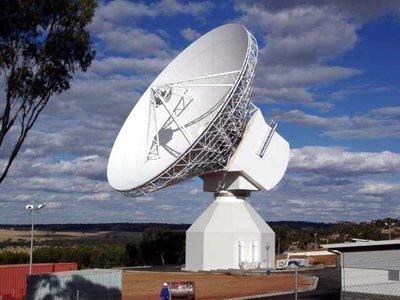
Increased ground tracking support has been scheduled throughout the swingby period.
In addition to ESA's 35m deep-space station at New Norcia, NASA's Deep Space Network (DSN) stations at Goldstone, Canberra and Madrid will participate.
The two agencies often work together and regularly share tracking station resources.















 Germany
Germany
 Austria
Austria
 Belgium
Belgium
 Denmark
Denmark
 Spain
Spain
 Estonia
Estonia
 Finland
Finland
 France
France
 Greece
Greece
 Hungary
Hungary
 Ireland
Ireland
 Italy
Italy
 Luxembourg
Luxembourg
 Norway
Norway
 The Netherlands
The Netherlands
 Poland
Poland
 Portugal
Portugal
 Czechia
Czechia
 Romania
Romania
 United Kingdom
United Kingdom
 Slovenia
Slovenia
 Sweden
Sweden
 Switzerland
Switzerland


























